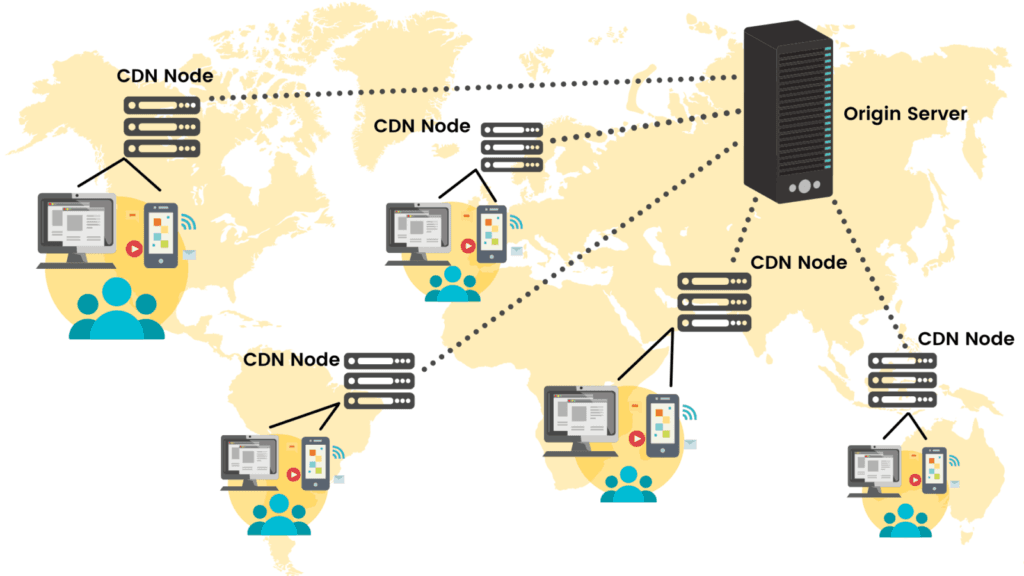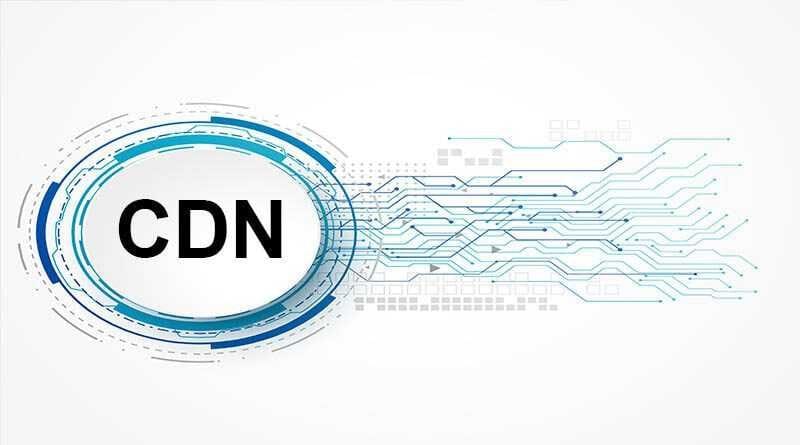In the age of digital media, website performance, and user experience are critical factors that can make or break an online platform. To achieve these goals, website owners are increasingly turning to Content Delivery Networks (CDNs). In this article, we will explore the benefits of CDN integration and how it can improve website performance and user experience.
What is CDN Integration?
A Content Delivery Network (CDN) is a distributed network of servers that store cached content, such as images, videos, and scripts, from websites. CDN integration involves configuring a website’s content delivery to utilize the CDN servers, resulting in faster loading times and improved user experience.
CDN integration works by caching static content, such as images, CSS, and JavaScript files, on multiple servers distributed across the globe. When a user requests a page from a website, the CDN servers closest to the user’s location will deliver the cached content, resulting in faster load times and reduced latency. This process also reduces the load on the website’s origin server, allowing it to handle more traffic and improving overall performance.

The Benefits of CDN Integration
CDN integration can significantly improve website performance and user experience. With CDN integration, website owners can ensure that their content is delivered quickly and efficiently to users, regardless of their location. This leads to faster loading times, reduced bounce rates, and increased engagement. Additionally, CDNs can help websites handle traffic spikes during peak usage times, such as during promotional events or flash sales.
Faster Loading Times for Improving Website Performance
One of the most significant benefits of CDN integration is faster loading times. When users visit a website, they expect the content to load quickly and seamlessly. If a website takes too long to load, users are more likely to bounce, leading to lost traffic and revenue.
CDN integration can significantly improve website loading times by delivering cached content from the server closest to the user’s location. This reduces the distance between the user and the website’s origin server, resulting in reduced latency and faster loading times. Additionally, CDNs can compress and optimize images, reducing the size of web pages and further improving loading times.
Reduced Bounce Rates: Improving Website Performance
Bounce rate refers to the percentage of users who visit a website and leave after viewing only one page. High bounce rates can indicate that a website’s content is not engaging or that the website is slow and difficult to navigate.
CDN integration can help reduce bounce rates by improving website performance and user experience. When users visit a website, they expect the content to load quickly and smoothly. If a website is slow or unresponsive, users are more likely to leave and visit a competitor’s website. By leveraging the power of a CDN, website owners can ensure that their content is delivered quickly and efficiently, leading to reduced bounce rates and increased engagement.
Increased Engagement
Engagement refers to the amount of time that users spend on a website and the actions that they take while there, such as making a purchase, filling out a form, or clicking on links. Increased engagement can lead to increased revenue and improved customer satisfaction.
CDN integration can help increase engagement by improving website performance and user experience. When users visit a website, they expect the content to load quickly and smoothly, allowing them to navigate the website and take action. By leveraging the power of a CDN, website owners can ensure that their content is delivered quickly and efficiently, leading to increased engagement and improved user experience.
Implementing CDN will improve Website Performance and User Experience
Implementing CDN integration involves working with a CDN provider to configure the website’s content delivery. This typically involves setting up caching rules, configuring DNS settings, and testing to ensure that the CDN is delivering content efficiently and accurately. By partnering with a trusted CDN provider, website owners can ensure that their platform is optimized for performance and user experience.
Setting up caching rules is an essential part of CDN integration. Caching rules determine which content is cached and how long it is stored on the CDN servers. Typically, static content, such as images, CSS, and JavaScript files, is cached for longer periods, while dynamic content, such as user-generated content, is cached for shorter periods.
Caching rules can be set up using the CDN provider’s dashboard or API. The CDN provider will typically provide preconfigured caching rules that can be customized to suit the website’s needs. It is important to configure caching rules carefully to ensure that the right content is cached and that the cache is cleared when necessary.
Configuring DNS Settings for CDN Integration
Configuring DNS settings is another essential part of CDN integration. DNS settings determine how requests for the website are resolved and routed to the CDN servers. This typically involves creating a CNAME record that points to the CDN provider’s servers.
DNS configuration can be complex and may require the assistance of a web developer or system administrator. It is important to ensure that DNS settings are configured correctly to ensure that requests are routed to the CDN servers and that the website’s content is delivered efficiently.
Testing CDN Integration
Testing CDN integration is an important step in ensuring that the website is optimized for performance and user experience. Testing involves verifying that the CDN is delivering content efficiently and accurately and that website functionality is not affected.
Testing can be done using a variety of tools, including web performance testing tools, network monitoring tools, and CDN-specific testing tools. It is important to test the website thoroughly to identify and resolve any issues before going live.
Choosing a CDN Provider
Choosing the right CDN provider is critical to the success of CDN integration. There are many CDN providers to choose from, each with its own strengths and weaknesses. When choosing a CDN provider, it is important to consider factors such as cost, performance, reliability, and support.
Cost for CDN Integration
CDN providers typically charge based on the amount of data transferred and the number of requests made. It is important to choose a provider that offers competitive pricing and that fits within the website’s budget. Some providers offer pay-as-you-go pricing, which can be a good option for websites with variable traffic patterns.
Performance
CDN performance can vary depending on factors such as server location, network capacity, and caching algorithms. It is important to choose a provider that offers fast and reliable performance, with servers located close to the website’s target audience. Some providers offer advanced caching algorithms, such as dynamic caching and intelligent routing, which can further improve performance.
Reliability
CDN reliability is critical to ensuring that the website is always available and responsive. It is important to choose a provider that offers a robust and resilient network, with multiple redundant servers and data centers. Some providers also offer service level agreements (SLAs), which guarantee a certain level of uptime and availability.
Support
CDN support can be critical to resolving issues quickly and efficiently. It is important to choose a provider that offers responsive and knowledgeable support, with multiple channels of communication, such as phone, email, and chat. Some providers also offer dedicated account managers and technical support teams.
Conclusion
CDN integration is a powerful tool for improving website performance and user experience. By leveraging the power of a CDN, website owners can ensure that their content is delivered quickly and efficiently, leading to faster loading times, reduced bounce rates, and increased engagement. Implementing CDN integration involves working with a trusted CDN provider to configure the website’s content delivery, set up caching rules, configure DNS settings, and test the website thoroughly. Choosing the right CDN provider is critical to the success of CDN integration, with factors such as cost, performance, reliability, and support all playing a role. With the right CDN provider and a carefully planned implementation strategy, CDN integration can help websites achieve their goals and succeed in today’s highly competitive online environment.
In addition to the benefits mentioned above, CDN integration can also help websites improve their search engine rankings. This is because page load time is a key factor in Google’s ranking algorithm. Websites that load quickly and efficiently are more likely to rank higher in search results, leading to increased visibility and traffic.
However, it is important to note that CDN integration is not a silver bullet for website performance issues. Other factors, such as server performance, code optimization, and image compression, also play a role in website speed and performance. CDN integration should be viewed as part of a broader strategy for improving website performance and user experience.
In conclusion, CDN integration is a powerful tool for improving website performance, reducing load times and increasing user engagement. By working with a trusted CDN provider and following best practices for implementation and testing, website owners can take advantage of the many benefits that CDN integration offers. Whether you are running an e-commerce website, a news site, or a personal blog, CDN integration can help you achieve your goals and succeed in today’s highly competitive online environment.














